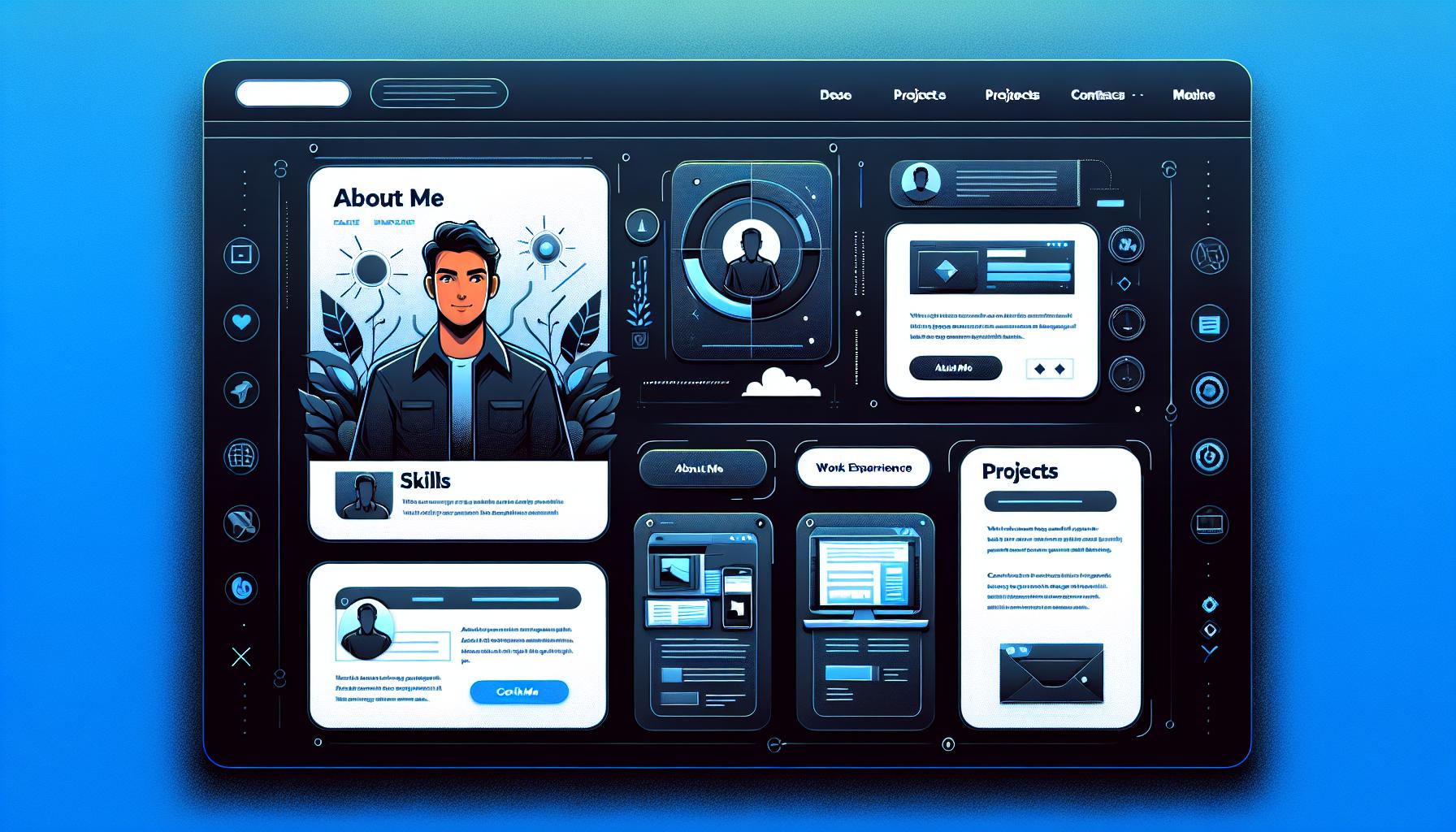
Creating an eLearning developer portfolio can seem like a daunting task, but it’s one of the most effective ways to showcase your skills and land that dream job. In a world where online learning is booming, having a polished portfolio sets you apart from the competition and highlights your expertise in instructional design, multimedia integration, and educational technology.
Why You Need an eLearning Developer Portfolio
Demonstrates Competency
A well-crafted portfolio highlights your proficiency in various eLearning tools and methodologies. Potential employers can see concrete instances of how you’ve applied these skills in different projects.
Builds Credibility
Portfolios build trust by offering proof of your capabilities. Including testimonials or case studies adds credibility, showing that others have benefited from your work.
Differentiates You from Others
In a competitive market, a unique portfolio sets you apart. It reflects not only technical abilities but also creativity and problem-solving skills through diverse project examples.
Facilitates Career Growth
A strong portfolio opens doors to new opportunities. It serves as a dynamic resume that evolves with your career, showcasing continuous improvement and learning.
Provides a Personal Brand
Your portfolio is part of your personal brand. It’s an opportunity to express who you are as a professional and what makes you unique in the field of eLearning development.
Showcasing Your Work & Creating Profile
The Find eLearning Experts platform offers a seamless way for eLearning professionals to create a public profile and showcase their skills. Whether you’re an instructional designer, eLearning developer, or LMS administrator, you can attract potential recruiters and companies seeking top talent in the eLearning industry. With an easy-to-use interface, it connects experts with organizations looking for specialized skills in creating and managing online learning experiences. Start building your profile today and get hired by top companies through Find eLearning Experts.
Key Components of an Effective Portfolio
An effective eLearning developer portfolio should be meticulously crafted to highlight your strengths and achievements. Each component plays a pivotal role in demonstrating your expertise and unique value.
Showcasing Your Skills
Presenting your skills clearly is essential. Detail the specific tools you use, like Articulate Storyline, Adobe Captivate, or HTML5. Highlight proficiency levels for each tool to give potential employers a clear understanding. Include information on instructional design principles you’ve mastered, such as ADDIE or SAM models. Provide evidence of soft skills like problem-solving and adaptability through brief anecdotes or project summaries.
Highlighting Notable Projects
Choose projects that best represent your capabilities. For each project, include a short description outlining objectives, challenges faced, and solutions implemented. Use visuals like screenshots or videos to make the descriptions more engaging. If possible, provide metrics showing the impact of your work—such as increased learner engagement rates or improved assessment scores.
Including Client Testimonials
Incorporating client testimonials adds credibility to your portfolio. Select quotes that emphasize key strengths like creativity, reliability, and effectiveness in meeting learning goals. Ensure testimonials are concise but impactful; they should directly relate to the skills and results you provide.
Each section collectively builds a comprehensive picture of what you bring to potential employers in the eLearning field.
How to Create Your Own eLearning Portfolio

An effective eLearning portfolio showcases your skills, projects, and unique approach. Here are key steps to help you build a standout portfolio.
Developing Your Flagship Project
Your flagship project serves as the centerpiece of your portfolio. Choose a project that best represents your skills and expertise. Ideally, this should be a comprehensive solution that addresses complex learning objectives and demonstrates various tools.
- Identify Objectives: Clearly define what the project aims to achieve. For instance, outline whether it’s designed for corporate training or educational purposes.
- Describe Challenges: Highlight any challenges encountered during development and how they were resolved.
- Showcase Tools: List the tools used in the project (e.g., Articulate Storyline, Adobe Captivate) and explain their application.
- Provide Visuals: Include screenshots or videos showing different stages of development.
- Measure Impact: Present data on learner engagement and outcomes to illustrate effectiveness.
By detailing these aspects, you’ll offer potential employers a thorough understanding of your capabilities through one standout example.
Showcasing Diverse Projects
Diverse projects demonstrate versatility in tackling different types of eLearning needs. Include at least three varied examples such as:
- Corporate Training Modules: Projects focused on compliance training or skill enhancement within organizations.
- Educational Games: Interactive games aimed at making learning engaging for students of various age groups.
- Microlearning Units: Short modules designed for quick consumption covering specific topics efficiently.
Each project should include clear descriptions, visuals, metrics on learner engagement, and client feedback if available.
Highlighting Innovation
Innovation sets you apart in the competitive field of eLearning development:
- Emerging Technologies: Showcase projects incorporating AR/VR or AI-driven personalization features.
- Creative Solutions: Describe how innovative approaches solved unique problems or enhanced learner engagement.
- User Feedback Incorporation: Demonstrate how user feedback led to iterative improvements in your projects.
Highlighting these elements will reflect your forward-thinking mindset and readiness to embrace new trends.
Design and Build Your Portfolio Website

Creating a portfolio website for an eLearning developer is crucial. It showcases skills, projects, and creativity in one centralized location.
Choosing the Right Platform
Selecting the right platform is essential. Options like WordPress, Wix, and Squarespace offer customizable templates suited for portfolios. For instance, WordPress provides numerous plugins to enhance functionality. I recommend platforms with drag-and-drop features to simplify content management.
Organizing Your Content
Content organization affects user experience. Structure sections logically: About Me, Projects, Skills, Testimonials, and Contact Information. Each project should include objectives, tools used, challenges faced, and outcomes achieved. By maintaining consistency in layout and detailing each element clearly, visitors can easily navigate through your work.
Ensuring a User-Friendly Design
A user-friendly design ensures accessibility. Use clean layouts with intuitive navigation menus to guide users smoothly through the site. Ensure that your website is mobile-responsive so it looks great on all devices. High-quality visuals enhance engagement; incorporate screenshots or demo videos of your projects to provide visual context.
Promoting and Maintaining Your Portfolio
An eLearning developer portfolio needs ongoing promotion and maintenance to remain effective. Consistent updates and strategic sharing ensure it reaches the right audience.
Conclusion
Crafting an eLearning developer portfolio is a powerful way to demonstrate your skills and stand out in the competitive online learning industry. By focusing on storytelling, showcasing diverse projects, and highlighting both technical and soft skills, you can create a compelling narrative that resonates with potential employers.
Remember to keep your portfolio updated regularly. Share it strategically across social media platforms and engage with professional communities to maximize visibility. A well-maintained portfolio not only showcases your expertise but also evolves with your career, reflecting continuous growth and innovation.
By following these guidelines, you’ll be well-equipped to build a standout eLearning developer portfolio that opens doors to new opportunities.